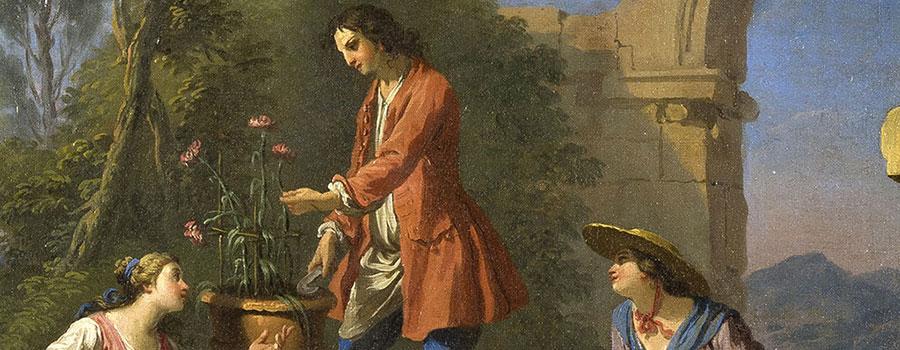
"PIETRE COLORATE MOLTO VAGHE E BELLE"
If you travel to Mantua, you may visit the striking exhibition of Chagall in the palace ‘Palazzo della Ragione’ in the middle of the historic centre between Piazza delle Erbe and Basilica di Sant’Andrea.
But those of us who love marble and natural stones will find another reason to visit the wonderful city near the river Mincio, surrounded by several lakes: the exhibition in the palace ‘Palazzo Ducale’ was opened in mid-October and can be visited until 31st March 2019, it’s titled: “Pietre colorate molto vaghe e belle” (graceful and beautifully coloured natural stones).
The subtitle of the exhibition reads: “Timeless art from the museum of the workshop of semi-precious stones”. A valuable collection of artwork is exposed, the pieces of semi-precious stones were made in the workshop of semi-precious stones in Florence, for which the entire world envy us. This famous workshop is based on the antique craft and art manufactory of Florence and was founded in 1588 during the Grand-Ducal period to teach workers the famous mosaic artwork of Florence, which is called "commesso fiorentino" in Italian.
Unlike the usual mosaic technique, this one doesn’t use geometric mosaic tiles. Big pieces are carved from marble, porphyry, Jasper, Agate and Lapis lazuli, then, according to their colour, dullness, glossiness and vein shades, are patiently composed to a ‘stone image’ … In this way, numerous art works of inestimable value, such as furnishings and objects, have been created. At that time, they even duplicated paintings with this unique technique, which are now exposed in museums all over the world to witness the geniality and singularity of Florence’s artwork.
Don’t miss this exhibition, you can even visit a showroom entirely dedicated to finishing techniques and antique tools. It’s unbelievable that these unique pieces of art were made with primitive tools, but you have to discover them yourself, because pictures do them no justice.
Therefore, we recommend you to visit Mantua and the Palazzo Ducale. Take a look at the wonderful frescoes in the Wedding room that were painted by Mantegna. Then start the exhibition tour where you can admire the famous painting ‘l'Allegoria della Terra’ (1750) from Giuseppe Zocchi as well as a stone replica, produced in 1752 by the Grand-Ducal Manufactory on request of the Emperor Francis Stephen of Lorraine, which is normally exposed in the Vienna Hofburg. Another exhibit is a modern mosaic picture from Florence’s workshop, where the practical aspect of artistic creation and the hidden secrets of art techniques are at the centre.
During the 20th century and especially after the great flood in 1966, the workshop in Florence has been gradually reformed into an educational institute, specialized in art restoration. It has now become a College and teaching centre for future restorers of cultural goods. The displayed art works are real masterpieces made of natural stone. Flowers and animals have been manufactured with great craftsmanship and look like real paintings, indeed, it’s hard to believe that they are made of stone. Admire the marble tables with skilful inlays which represent music instruments, marine animals and shells, which appear three-dimensional. You will be tempted to smell the flower decorations, because they seem so real and you’ll surely appreciate the copies of paintings.
[widgetkit id="16"]
